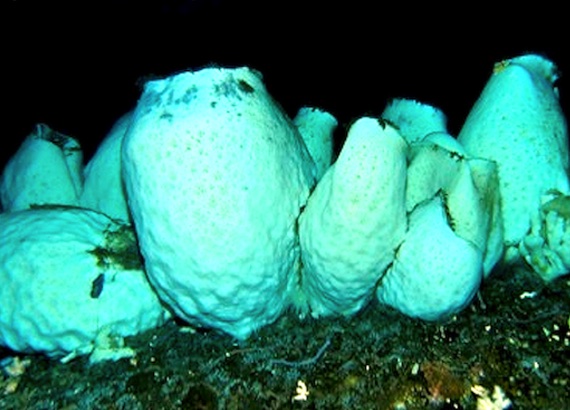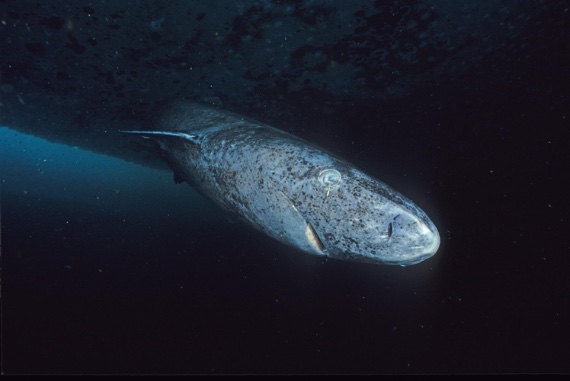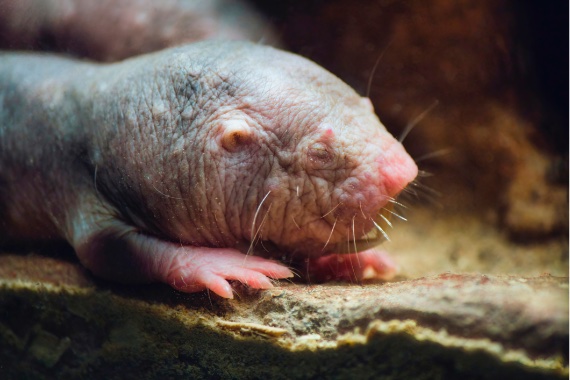We humans live for about 80 years, and depending on our genes, lifestyle habits and the level of development in the place where we live, we can sometimes live for over a century. We don’t yet know the biological limit of human life the biological limit of human life is, or how far science will be able to extend it. Among our relatives, chimpanzees and gorillas rarely reach the age of 60. In fact, we are the longest-lived land mammals. And yet there are seemingly more modest animals, some of which we will look at here, that far outlive us, or live much longer than related species. What is their secret, and what can we learn from them?

Antarctic sponge (Anoxycalyx (Scolymastra) joubini): 15,000 years old
The absolute record for longevity in the animal kingdom is currently held by certain types of sponge. They were once thought to be the first animals on the evolutionary tree, but that title has been taken from them by ctenophores (comb jellies), which have certain evolutionary innovations that sponges would later give up. In return, sponges enjoy an exceptionally long life. A two-metre specimen of the Antarctic sponge Anoxycalyx joubini is estimated to be 15,000 years old. And although this may be an overestimate, a specimen of Monorhaphis chuni from the East China Sea is thought to be 11,000 years old.
Both sponges and corals have been found to live for hundreds or thousands of years. According to scientists, this long life is a trade-off for their simplicity: they always maintain a large arsenal of stem cells capable of regenerating and rejuvenating their few different cell types, which is almost tantamount to immortality.

Ocean quahog clam (Arctica islandica): 507 years old
The individual animal that holds the confirmed record for the longest-lived is a clam from Iceland, found off the coast of the island nation in 2006, which was 507 years old, calculated by counting the annual growth bands in its shell. Estimated to have been born in 1499, it was dubbed Ming the Mollusc by the press, a reference to the dynasty that ruled China at the time, although Icelandic researchers named it Hafrún, Icelandic for “Ocean Mystery”. The clam was collected from among many other specimens that were frozen—and thus sacrificed—in service of science.
Ming’s case is not considered unique; some bivalve molluscs are among the longest-living animals. The secrets of their success include a low production of oxidative radicals and misfolded proteins—pathological in diseases such as Alzheimer’s—together with low metabolic rates in cold water that slows life processes..

Greenland shark (Somniosus microcephalus): 400 years old
The longest living vertebrate known to science is a five-metre-long Greenland shark, collected dead in 2016 and estimated to be 392 years old, with a margin of error of 120 years. Its age was determined by measuring radiocarbon from the eye lenses of a sample of Greenland sharks, the smallest of which contained radioisotopes spread by nuclear bomb tests in the middle of the last century. This provided data for a growth curve that was used to estimate the age of these sharks based on their size.
The species’ complete mitochondrial genome (a small circular strand of DNA found in mitochondria, the power plants of cells) was sequenced in 2017. Scientists are looking at the DNA for possible clues to the shark’s longevity. It is thought that low oxidative stress and a high capacity for regeneration, including the repair of damaged DNA, may contribute to its long life, but that its low metabolism, facilitated by the cold waters in which it lives, undoubtedly also plays a role.

Bowhead whale (Balaena mysticetus): 211 years old
Another inhabitant of icy northern waters, the bowhead whale, holds the record for the longest-living mammal. It was already known that it could live for a century, but a more detailed study found much older specimens, one of which lived to be 211 years old. An analysis of the genome of this species suggested that its longevity could be as high as 268 years.
As with other long-lived marine animals, their slow metabolism in cold water is probably one of the most important factors. But of particular interest is the fact that these animals appear to resist diseases more typically associated with ageing, such as cancer and neurodegenerative disorders, suggesting possible adaptations in their genes that counteract the effects of ageing and may provide clues to increasing human longevity.

Naked mole-rat (Heterocephalus glaber): 31 years old
Compared to the centuries or even millennia that some other animals live, the 31 years attained by a captive naked mole-rat may seem like a trifle. But this bizarre animal from the Horn of Africa, also known as a sand puppy, is a rodent. Other similarly sized members of the order Rodentia, such as rats, barely live five years, and only the heftiest of rodents, such as porcupines and beavers, exceed 20 years, making the naked mole-rat a complete anomaly.
What’s more, elderly naked mole-rats don’t appear to suffer from increased mortality: they are resistant to cancer and other diseases of ageing and maintain enviable cardiovascular health. The fact that these animals can be studied in the laboratory has made them a model for studying the keys to longevity. Analyses of their genome have revealed several possible clues, including an apparent protection of their telomeres, the ends of chromosomes that shorten in other species as they age.
Comments on this publication